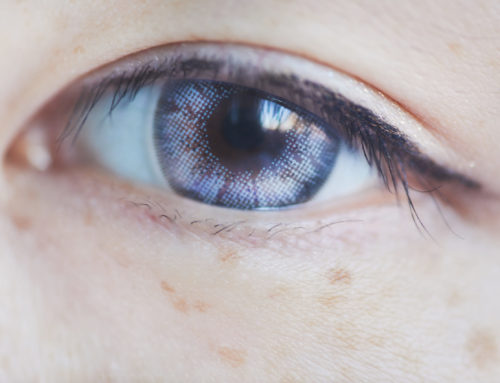After the last couple of blogs about multifocal IOLs, I had a thought. I imagined a research-loving, detail-oriented person (a Hermione Granger type) using Google to find comparisons between different brands of multifocal IOLs. Then they got to my blogs and thought, “what about trifocal vs bifocal or diffractive vs refractive optics or Alcon vs AMO?” So today I’m going to break from our 30,000-foot view and talk about some details.
The Difference Between Diffractive And Refractive Optics
First up, we can talk about diffractive optic multifocals, because no one uses refractive optic multifocals anymore. Despite this being a “details” blog, I’ll just summarize the general difference between diffractive and refractive optics. Refractive multifocals have concentric rings that have focus power for near or far. Good plan, but the glare and halos were rough. So the optics PhDs went back to work and figured out diffractive multifocals. This is the modern version and uses concentric, micro-stepped height differences on the IOL surface to focus distance and near vision. Everyone saw how much better this was for glare and halos, and the refractive optics people stopped getting invited to scientist parties. It’s been a diffractive world ever since.
With that out of the way, let’s talk brand names. The best way to break down the detailed differences between multifocals is by focal point. By that, I mean the distance(s) from your eye to the point(s) where the vision is most clear. We need the parenthetical “s” because it’s a multifocal. It has more than one focal point. They all lean towards better distance, intermediate, or near in some combination. You can think of each IOL brand as having a stack of poker chips – each chip representing “clear vision” – that must be distributed between near (12-18 inches), intermediate (24-36 inches) and distance (everything 5 feet away and farther).
PanOptix, ReSTOR IOLs, And The Tecnis Multifocal
First up, we’ve got PanOptix and ReSTOR IOLs (from Alcon) and the Tecnis multifocal (from AMO). The PanOptix stands out as the first real attempt at a trifocal IOL, aiming for good distance, intermediate, and near. The ReSTOR, however, tries a different tack: excellent distance and good intermediate to near(ish) vision. Back to poker chips, PanOptix has three even stacks for distance/intermediate/near and ReSTOR puts two thirds of the pile on distance and leaving a third of its chips for intermediate-to-near(ish) vision.
The Tecnis multifocal is interesting because we get choices on where to place the near vision stack. Named by what I can only assume was a sci-fi robot, Tecnis’ three multifocals are called ZKB00, ZLB00, and ZMB00. The differences between them respectively can be summarized as follows – do you want clear desktop vision, clear laptop vision, or clear cross-stitching vision? Bonus: each choice comes with good distance vision.
Symfony With Extended Depth Of Focus
Lastly, we’ve got the Symfony IOL. It has diffractive rings, but aims for a new feature we will be discussing much more in the future: extended depth of focus (EDOF). The inventor of the Symfony took his stack of poker chips and said, “Okay, let’s put half the whole stack on distance. And now I’ll take the other half, and kind of push it over, so it covers all of the intermediate and spills over into near a little bit.” Street signs? Easy. Desktop computer screen?
The Synergy lens implant combines the EDOF technology of Symfony and merges it with the Tecnis multifocal technology.
Easy. A book with a small font? Probably going to need to grab the reading glasses. The Vivity lens implant from Alcon also aims at EDOF, but doesn’t have diffractive rings to it. Instead, it’s got a central, subtle “bump” to increase depth of focus at near.
What’s the difference between EDOF and a true multifocal IOL? It again comes down to focal points. With a multifocal, there is a specific “sweet spot” for the near vision. With EDOF, that “sweet spot” becomes more of a range, where a couple of inches closer or further away makes no difference.
Find Your IOL Surgeon
And with that, we’ve covered the details. There are more details to these IOLs. My heavens, so many details, but luckily you can find an IOL surgeon who loves this stuff so that you can just focus on loving your vision. I admire attention to detail, and I know you’ve got it in spades if you’ve made it to this point in the blog. My parting benediction for you is that the details about your eye matter more than any detail of an IOL. That’s why all the hi-tech diagnostic imaging and time with your doctor is irreplaceable. Your best vision is your best vision. Hopefully, these details helped a little on your journey to obtain it. Want to know more? Get in touch with our team today!



